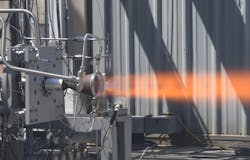NASA additive manufacturing project shapes future for agency, industry rocket makers
HUNTSVILLE, Ala. - The widespread commercial adoption of additive manufacturing technologies, commonly known as 3D printing, is no surprise to design engineers at NASA’s Marshall Space Flight Center in Huntsville, Alabama whose research created stronger, lighter weight materials and new manufacturing processes to make rocket parts, Beth Ridgeway writes for the NASA.
Continue reading original article.
The Military & Aerospace Electronics take:
5 August 2024 -Paul Gradl, the project’s co-principal investigator at National Aeronautics and Space Administration (NASA) Marshall, says "Across NASA’s storied legacy of vehicle and hardware design, testing, and integration, our underlying strength is in our application of extremely durable and severe environment materials and innovative manufacturing for component design. We strive to fully understand the microstructure and properties of every material and how they will ultimately be used in components before we make them available to industry for flight applications.
"The RAMPT project’s goal is to support commercial, technical readiness, enabling our industry partners to meet the challenges inherent in building new generations of safer, more cost-effective deep space exploration propulsion systems," said John Fikes, RAMPT project manager.
"NASA, through public-private partnerships, is making these breakthroughs accessible to the commercial space industry to help them rapidly advance new flight technologies of their own," Gradl said. "We’re solving technical challenges, creating new supply chains for parts and materials, and increasing the industry’s capacity to rapidly deliver reliable hardware that draws a busy commercial space infrastructure ever closer."
Related: Can additive manufacturing deliver the materials you need?
Related: GKN Aerospace and Materialise team on additive manufacturing in aviation
Jamie Whitney, Senior Editor
Military + Aerospace Electronics
